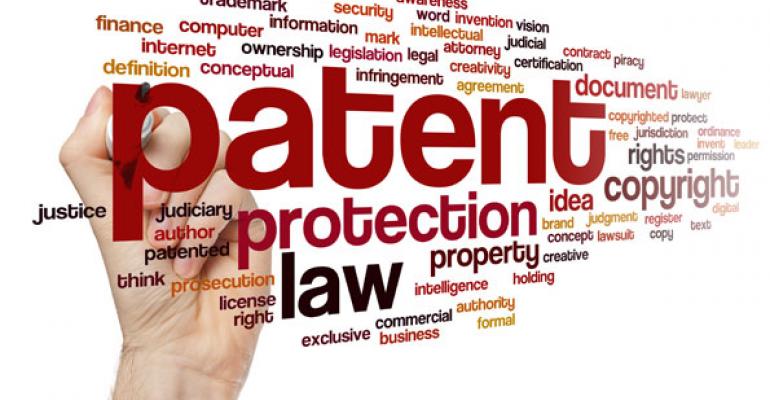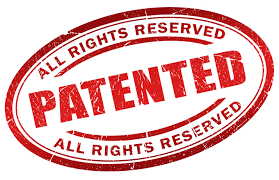- Generally Patent means a government authority or license conferring a right or title for a set period, especially the sole right to exclude others from making, using, or selling an invention
- Patent is a form of intellectual property that gives its owner the legal right to exclude others from making, using or selling an invention for a limited period of years in exchange for publishing an enabling public disclosure of the invention
- It is also a granting of property right by a sovereign authority to an inventor.
Definition
- The word patent originates from the Latin patere, which means “ to lay open (i.e.to make available for public inspection).
- In modern usage, the term patent usually refers to the right granted to anyone who invents something new, useful and non-obvious.
Role of World Trade Organization in Patent ?
- Under the World Trade Organization‘s (WTO) TRIPS Agreement, patents should be available in WTO member states for any invention, in all fields of technology, provided they are new, involve an inventive step, and are capable of industrial application. Nevertheless, there are variations on what is patentable subject matter from country to country, also among WTO member states. TRIPS also provides that the term of protection available should be a minimum of twenty years.
What is TRIPS Agreement ?
The Agreement on Trade-Related Aspects of Intellectual Property Rights (TRIPS) is an international legal agreement between all the member nations of the World Trade Organization (WTO). It sets down minimum standards for the regulation by national governments of many forms of intellectual property (IP) as applied to nationals of other WTO member nations.
The TRIPS agreement introduced intellectual property law into the multilateral trading system for the first time and remains the most comprehensive multilateral agreement on intellectual property to date.
Why Patent is important?
A patent does not give a right to make or use or sell an invention. Rather, a patent provides, from a legal standpoint, the right to exclude others from making, using, selling, offering for sale, or importing the patented invention for the term of the patent, which is usually 20 years from the filing date[5] subject to the payment of maintenance fees.
A patent is a limited property right the government gives inventors in exchange for their agreement to share details of their inventions with the public. Like any other property right, it may be sold, licensed, mortgaged, assigned or transferred, given away, or simply abandoned.
Application of patent ?
- The true and first inventor(s), his assignee, or their legal representative – can apply for patent with a provisional or a complete specification either themselves or through an agent by duly submitting the application form – at the appropriate office. In India, there are 4 offices, namely Delhi, Mumbai, Chennai & Kolkata and depending on the address of the applicant where he resides, has his domicile, or has a place of business or the place from where invention actually originated, the appropriate office is applicable. In case of foreign applicants, who don’t have domicile, place of business in India, place of business or address for service in India of the patent agent appointed by them is the determining factor for appropriate office. Specific state wise details can be accessed here: http://ipindia.nic.in/ipr/patent/patjurid.htm
- The date of first filing of a patent application is called the priority date. In the patent system of first to file, this date becomes important and if there are two patents/ patent applications with same/substantially similar subject matter, the earlier priority date patent application/patent survives the other.
- If filing has to be done in other countries, the priority of the initially filed application (parent application) -can be taken and filed in respective countries/regions. The subsequent applications shall have the same priority date as the parent application and are referred to as family members of the initial application and each other.
- The application process is generally similar but the format of application may differ from country to country and the applicant ordinarily cannot file without professional assistance of a patent agent or attorney in that country/region.
Benefits of Application
- The patent internalizes the externality by giving the [inventor] a property right over its invention.
- In accordance with the original definition of the term “patent”, patents are intended to facilitate and encourage disclosure of innovations into the public domain for the common good. Thus patenting can be viewed as contributing to open hardware after an embargo period (usually of 20 years).
- Modern patent usage is that a small-time inventor, who can afford both the patenting process and the defense of the patent,[47] can use the exclusive right status to become a licensor. This allows the inventor to accumulate capital from licensing the invention and may allow innovation to occur because he or she may choose not to manage a manufacturing buildup for the invention. Thus the inventor’s time and energy can be spent on pure innovation, allowing others to concentrate on manufacturability.
Infringement of Patent
- Patent infringement occurs when a third party, without authorization from the patentee, makes, uses, or sells a patented invention. Patents, however, are enforced on a nation by nation basis. The making of an item in China, for example, that would infringe a U.S. patent, would not constitute infringement under US patent law unless the item were imported into the U.S
Challenge
- In most jurisdictions, there are ways for third parties to challenge the validity of an allowed or issued patent at the national patent office; these are called opposition proceedings. It is also possible to challenge the validity of a patent in court. In either case, the challenging party tries to prove that the patent should never have been granted. There are several grounds for challenges: the claimed subject matter is not patentable subject matter at all; the claimed subject matter was actually not new, or was obvious to the person skilled in the art, at the time the application was filed; or that some kind of fraud was committed during prosecution with regard to listing of inventors, representations about when discoveries were made, etc. Patents can be found to be invalid in whole or in part for any of these reasons
All views expressed on this site are my own and do not represent the opinions of any entity whatsoever with which I have been, am now and will be affiliated.
The content of this article is intended to provide a general guide to the subject matter. Specialist advice should be sought about your specific circumstances




